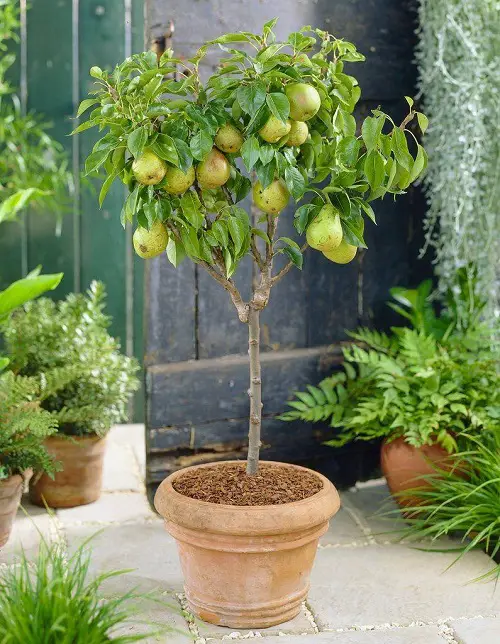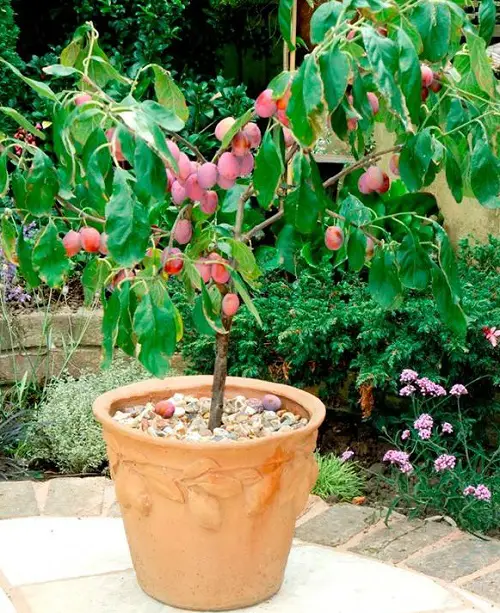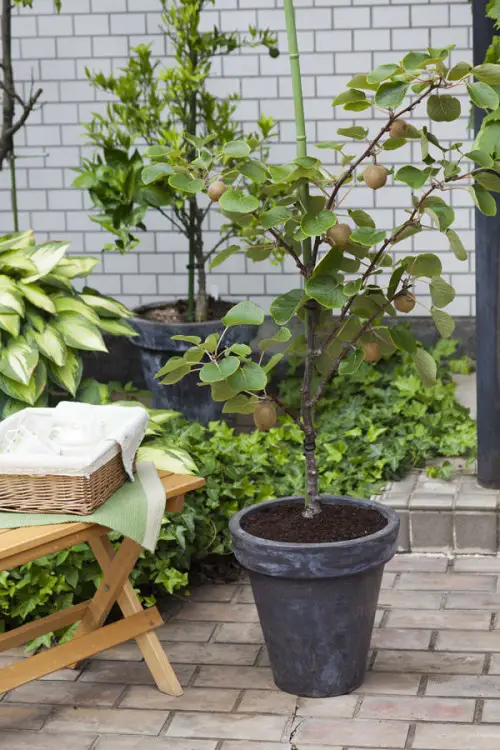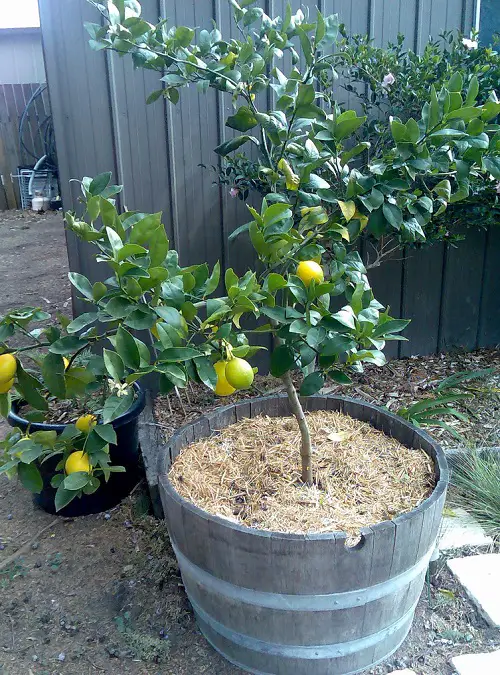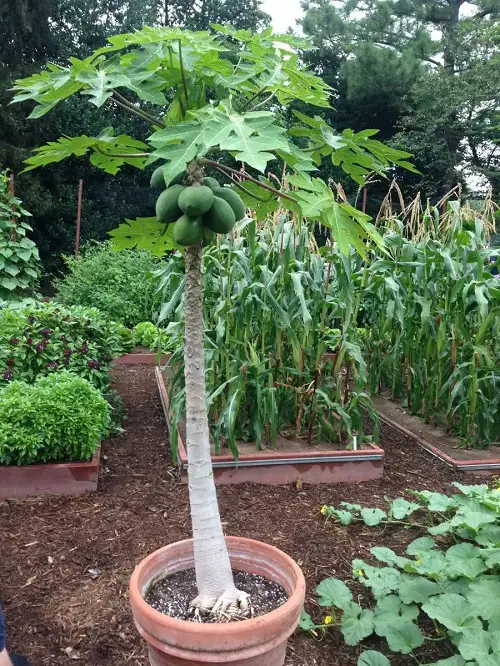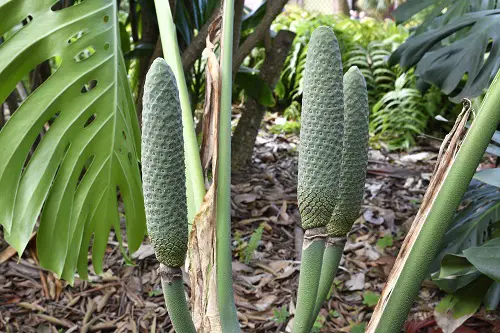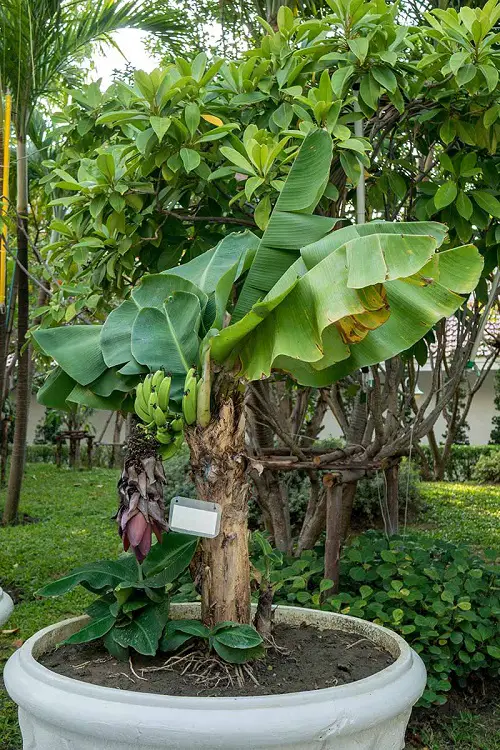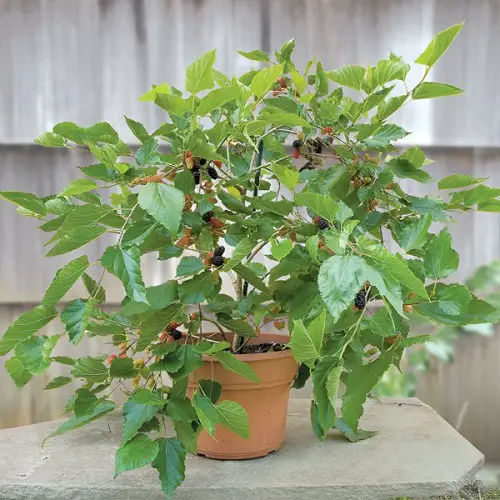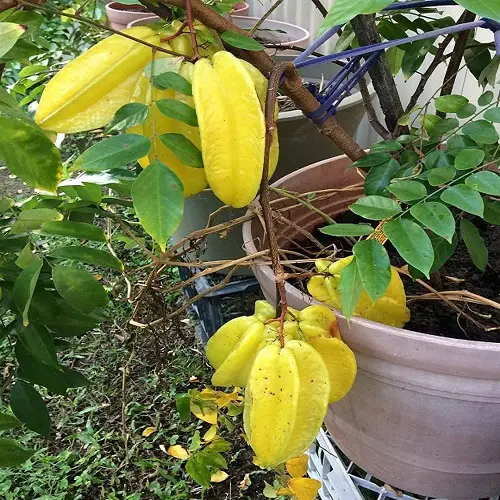Wondering whether you can grow Fruits in Shade or not? Well, we bring you the best ones you can grow for a plentiful harvest!
If you don’t have a sunny spot in your garden, then don’t worry. You can still enjoy juicy fruits! How? Check out the list of Fruits in Shade!
Fruits that Grow in Shade
While it’s difficult to grow fruits in the complete shade–there are some, like Guiana chestnut, which tolerate low light and full shade. However, most of the fruit trees and shrubs in this need at least partial shade to thrive and remain productive.
1. Apple
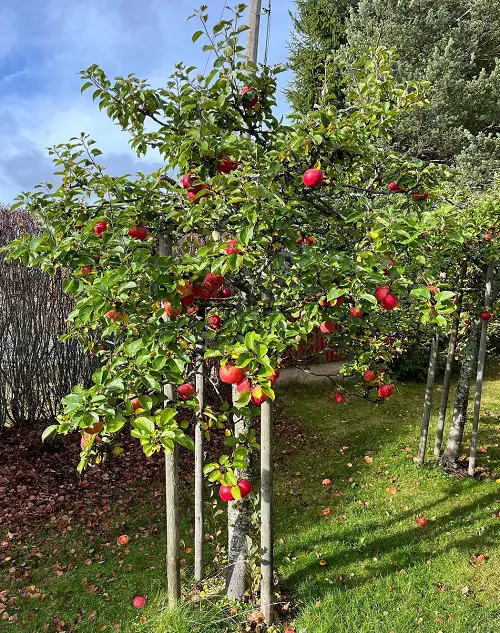
Botanical Name: Malus
USDA Zone: 3-9
It’s possible to grow apple trees even if you have limited space, not just for those who own large plots of land. If you live in central or northern areas, it’s best to plant apple trees during spring.
Growing Tips: Learn about growing apple trees in pots here
2. Asian Pears
Botanical Name: Pyrus pyrifolia
USDA Zone: 5-9
Incorporating Asian pears into your edible garden can enhance its visual appeal since these dwarf trees boast pure white blooms in the spring. With numerous varieties available, it’s recommended that you sample the fruit before making a selection.
Growing Tips: Asian pears have some shade tolerance and can grow in various soil types, but they thrive in at least part sun and prefer well-draining soil.
3. Blueberries
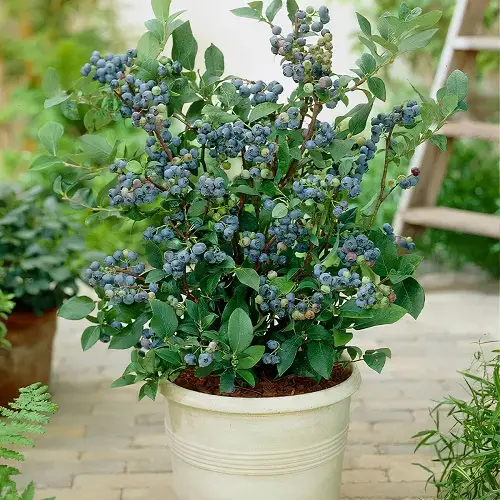
Botanical Name: Vaccinium
USDA Zone: 3-7
Not only are shade-grown blueberries bursting with sweet and tangy flavor, but they’re also packed with antioxidants that can help keep your body healthy and strong.
Growing Tips: Learn How to Grow Blueberries in a Container here
4. Cherries
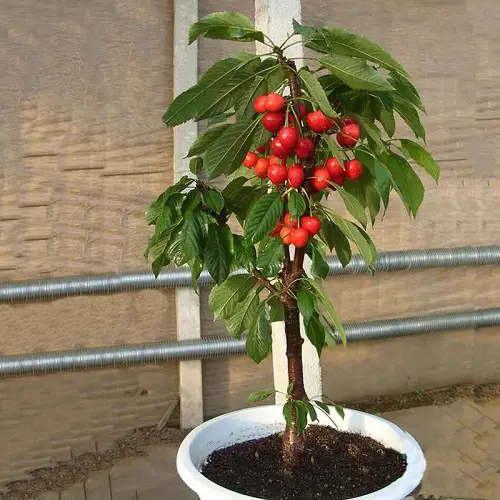
Botanical Name: Prunus
USDA Zone: 5-8
Shady plots are ideal for growing acid cherries, as these trees do not require long hours of sunlight to become sweet. They make a stunning sight when trained on a north-facing wall, adorned with their spring blossoms, glossy fruits, and vibrant autumn foliage.
Growing Tips: Plant cherry trees in fertile, well-drained soil and support the branches as the trees grow.
5. Currants
Botanical Name: Ribes
USDA Zone: 3-7
These plants can thrive in partially shaded areas and are suitable for both pot and ground cultivation. ‘Ben Connan’ and ‘Ben Hope’ are among the varieties known for their high productivity.
Growing Tips: Make sure you use a well-draining growing medium.
6. Grapes
Botanical Name: Vitis
USDA Zone: 5-9
It is feasible to cultivate grapes even if you lack a garden area with constant full sunlight exposure, provided that you plan and prepare ahead to optimize the yield.
Growing Tips: Learn all about growing grapes here
7. Peaches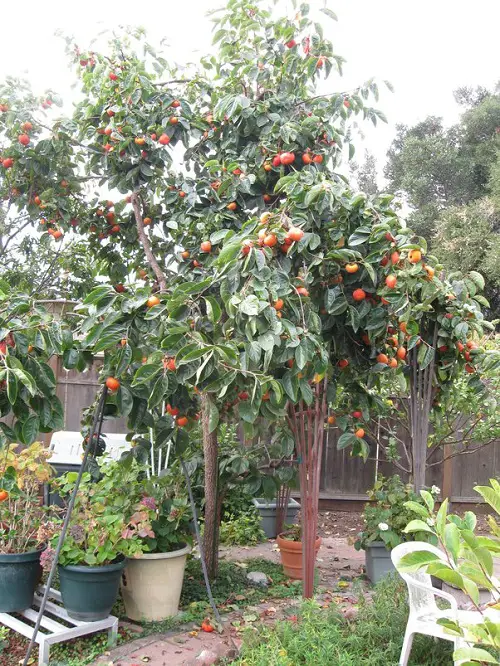
Botanical Name: Prunus persica
USDA Zone: 5-8
Peach trees are an excellent option for novice fruit tree growers because they are self-fruitful, eliminating the need for another tree’s presence to facilitate pollination.
Growing Tips: A bit of morning sunlight exposure will do wonders for its growth.
8. Plums
Botanical Name: Prunus
USDA Zone: 5-9
These trees can be either dwarf or full-sized and can produce small, oval-shaped fruits that come in shades of purple or red.
Growing Tips: Do not overwater the plant, and ensure to use a good quality potting mix.
9. Strawberries
Botanical Name: Fragaria vesca
USDA Zone: 3-10
Alpine or mountain strawberries are a diminutive variety of well-known fruit that can flourish in partial shade. ‘Alexandria’ and ‘Mignonette’ are the best variety for shade.
Growing Tips: Learn everything about growing strawberries here
10. Passionfruit
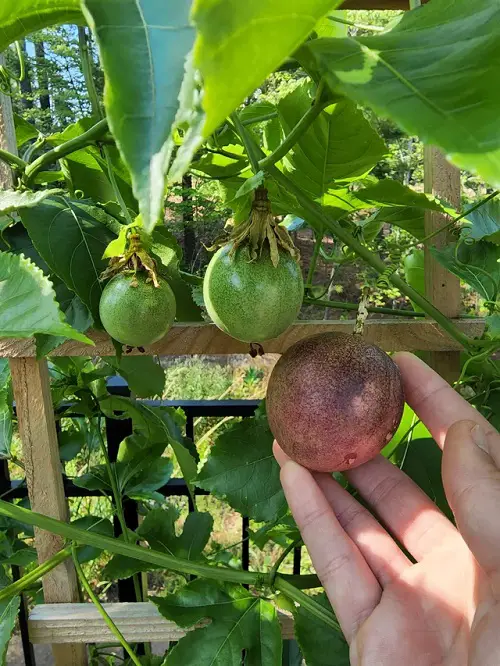
Botanical Name: Passiflora edulis
USDA Zone: 9-11
With its unique aroma and tangy taste, this fruit is perfect for cocktails, smoothies, or as a topping for your favorite desserts. The best part is that it grows well without sunlight, even under the canopy of big trees.
Growing Tips: Passion fruit prefers full sun to partial shade. Grow it where the plant gets morning sun and some afternoon shade.
11. Hardy Kiwi
Botanical Name: Actinidia deliciosa
USDA Zone: 7-9
The hardy kiwi is a perennial vine with smaller versions of the well-known kiwifruit. This plant can endure cold weather and produces fruit during the autumn season.
Growing Tips: Check out How To Grow Kiwi In a Pot here
12. Avocado
Botanical Name: Persea americana
USDA Zone: 9-11
While it is possible to cultivate an avocado tree in partial shade or as an indoor houseplant, it will only flourish and bear fruit if grown outdoors in a climate with ample sunlight and relatively warm temperatures.
Growing Tips: Exposure to a bit of morning sunlight every day will be good for fruiting.
13. Meyer Lemon
Botanical Name: Citrus x meyeri
USDA Zone: 9-11
A citrus tree produces sweet, juicy fruit with a slightly tangy flavor. Meyer lemons are a popular ingredient in many recipes, and their fragrant blossoms can also be used in teas or as a natural air freshener.
Growing Tips: Check out our article on growing a lemon tree in a container here
14. Pawpaw

Botanical Name: Asimina triloba
USDA Zone: 5-9
Savor the unique and tropical taste of shade-grown pawpaw – a fruit that’s both delicious and nutritious. The fruit can be eaten fresh or used in pies, ice cream, or smoothies.
Growing Tips: It can withstand shade, but it produces the most fruits when grown in full sunlight, provided that it receives sufficient water and protection from strong winds.
Here are Exotic Fruits from Around the World
15. Malabar Chestnut
Botanical Name: Pachira aquatica
USDA Zone: 9-12
The Malabar Chestnut tree is an evergreen tree that flourishes in sub-tropical climates. These trees can grow tall, but you can also cultivate them as potted bonsai trees and even as houseplants.
Growing Tips: Though it won’t mind being in the shade, a bit of sunlight exposure every once in a while will be good.
16. Fig
Botanical Name: Ficus carica
USDA Zone: 8-11
Growing fig trees can be a delightful experience in warm climates, but it is possible to cultivate them successfully in more temperate regions with some extra care in winter.
Growing Tips: Here’s everything about growing figs in pots
17. Loquat

Botanical Name: Eriobotrya japonica
USDA Zone: 7-10
The attractive, evergreen foliage and fragrant blooms make it a popular fruit to grow in the shade in this list. But make sure it gets plenty of sunlight for the best growth.
Growing Tips: Loquat trees thrive in full sun, but they can also tolerate some shade. However, it is essential to note that partial shade can reduce flower and fruit production.
Here is a List of the Best Palm Fruits
18. Papaya
Botanical Name: Carica papaya
USDA Zone: 9-11
Papayas are tropical fruit trees that can tolerate shade. They produce large, sweet fruit that is high in vitamins and minerals.
Growing Tip: Check out our article on growing Papaya here
19. Fruit Salad Plant
Botanical Name: Monstera deliciosa
USDA Zone: 10-12
This fruit is covered in green tiles and has a corn-like shape. The cream flowers of the plant require warm or tropical conditions to grow, and they only develop when the plant has matured.
Growing Tips: The optimal conditions for growing this plant include warm and humid environments with partial shade.
20. Barbados or Acerola Cherry
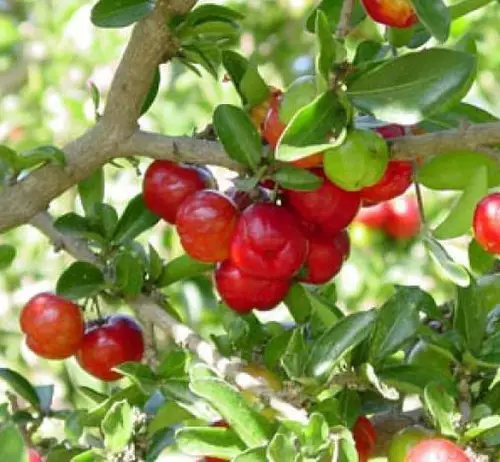
Botanical Name: Malpighia glabra
USDA Zone: 9-11
Acerola cherry offers small, bright red, berry-sized fruits that look like common cherries. Use a well-draining growing medium to ensure it fruits well.
Growing Tips: It prefers well-draining soil and moderate moisture levels.
21. Banana
Botanical Name: Musa
USDA Zone: 9-11
Bananas are a great option for anyone who has limited space, as they are super easy to grow in, even in big containers.
Growing Tips: Here’s all you need to know about growing bananas
22. Mulberry
Botanical Name: Morus
USDA Zone: 5-9
With low upkeep requirements once matured, these trees yield delectable and richly flavored berries available in a range of hues.
Growing Tips: Here’s all about growing Mulberry
23. Jackfruit
Botanical Name: Artocarpus heterophyllus
USDA Zone: 9-11
The fruit is sweet and flavorful, with a texture similar to pulled pork. Every part of the jackfruit tree has a use, from the wood for building to the leaves for wrapping food.
Growing Tips: Learn How to Grow Jackfruit here
24. Starfruit
Botanical Name: Averrhoa carambola
USDA Zone: 9-11
This exotic fruit has a distinctive star shape when sliced, with a tart, tangy flavor that is perfect for salads, cocktails, and desserts. This evergreen tree, with glossy leaves and delicate, fragrant flowers, attracts bees and other pollinators.
Growing Tips: Learn How to Grow Starfruit here
25. Cacao Tree
Botanical Name: Theobroma cacao
USDA Zone: 9-12
The cacao tree produces cocoa beans, and you can easily grow it in the shaded portion of your garden.
Growing Tips: Provide protection from winds and shade from taller trees.
Check out our article on the best chocolate-scented flowers
26. Cashew Apple
Botanical Name: Anacardium occidentale
USDA Zone: 10-11
While the nut is the most famous part of the cashew tree, the fruit it produces is also a tasty treat. The cashew apple is juicy and sweet, with a flavor similar to a cross between an apple and a pear.
Growing Tips: Learn about growing cashew trees here


